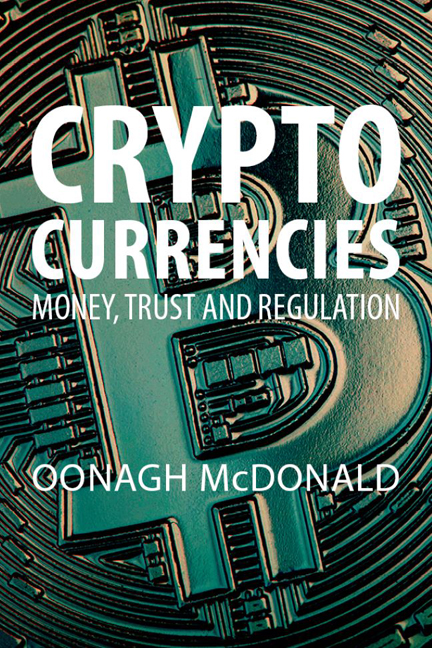Book contents
- Frontmatter
- Contents
- Preface
- Acronyms
- 1 Introduction: Bitcoin beginnings
- 2 New cryptocurrencies and new developments
- 3 Stablecoins: the search for stability
- 4 Initial coin offerings: the “Wild West”
- 5 The regulatory response to ICOs
- 6 Global stablecoins: Libra
- 7 Reactions to stablecoins
- 8 Central banks and central bank digital currencies
- 9 The decline of cash
- 10 Credit and trust
- 11 Epilogue: the crypto winter
- Appendix: smart contracts
- Notes
- Index
- Frontmatter
- Contents
- Preface
- Acronyms
- 1 Introduction: Bitcoin beginnings
- 2 New cryptocurrencies and new developments
- 3 Stablecoins: the search for stability
- 4 Initial coin offerings: the “Wild West”
- 5 The regulatory response to ICOs
- 6 Global stablecoins: Libra
- 7 Reactions to stablecoins
- 8 Central banks and central bank digital currencies
- 9 The decline of cash
- 10 Credit and trust
- 11 Epilogue: the crypto winter
- Appendix: smart contracts
- Notes
- Index
Summary
Until recently, we thought we were pretty clear about money. It was quite simply the notes and coins in our wallets, or our debit and credit cards, or the welcome additions to our bank accounts, appearing as credits on our screens or on our bank statements. We never doubted that a shop would accept cash, or cards, when we pay for goods and services. We transfer money to other people's bank accounts either in the same country or to another, rarely doubting that it will arrive, even if we might consider the process slow and expensive. Most people in developed economies do not give the form of money or the underlying processes which ensure it functions a moment's thought. Their only concern is very likely the need or desire for more money!
The arrival of new forms of “money” – so-called “cryptocurrencies” – has created much interest and considerable controversy. The purpose of this book is to describe, explain and evaluate the attempts to provide these new currencies as alternatives to fiat money, the government-issued currencies. We shall examine in detail these various forms of new currencies and consider whether or not they can really count as “money” and can replace the familiar forms. Concerns about the safety and reliability of digital assets and their impact on fiat money and monetary policy has led to many central banks exploring the possibility of issuing their own digital currency. The book shall also assess the possible emergence of a central bank digital currency and what that might mean for money.
The key theme throughout this book is that these various efforts to replace fiat currency with cryptocurrencies fail because their structures cannot establish trust, which is essential for money to operate as a means of exchange and value. It is ironic that “trust” was a key motivation behind the first “peer-to-peer electronic cash systems”, designed in the wake of the global financial crisis when faith in central banks and the global financial system was at its weakest.
- Type
- Chapter
- Information
- CryptocurrenciesMoney, Trust and Regulation, pp. vii - xPublisher: Agenda PublishingPrint publication year: 2023

